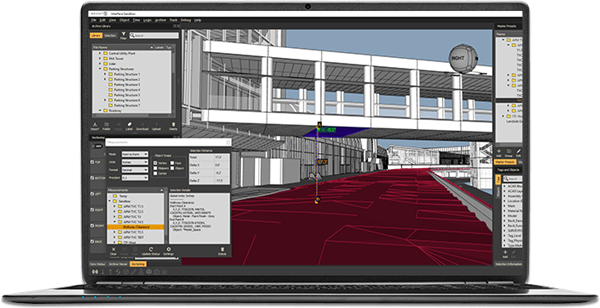It’s been said that if you change one small thing today, you will see big changes tomorrow. This is key for the adoption of construction technology. Pre-Planning, training, safety, risk mitigation, site management and tracking of materials are all good ways to improve productivity on the construction site. Yet too often we focus only on the big goals, tending to forget these less obvious areas. But it can really pay to explore ways to use construction technology to improve workflows, processes for onsite activities, operations and decision making, which in turn will generate big rewards in productivity and organizational improvement.
We also need to discuss the benefits of using the right construction technology to maximize the flow of your information to gain efficiencies in productivity. These efficiencies are in areas that may not jump out at you initially as being something you would focus on. Yet, we’ve seen great gains in these parts of the business with very little change management and disruption across the organization or job site. Small adjustments lead to big improvements.
Integrate Systems to Improve Workflows and Reduce Downtime
Below is a diagram of what being on a construction site used to look like. Notice I have all of my amazing spreadsheets that I have “stolen” from other successful field engineers, “frankensteining” them together to make the ultimate tool for me. And me is the key term here because my spreadsheets are only for me, and that’s the problem.

I use that information to populate the other tools for management or for the owner, but my source of the truth only lies with me, on my local computer. My spreadsheet is so complex that no one else really knows how to use it. Say that halfway through the megaproject I’m on, I’m given an opportunity to go fix a struggling project across the country. My amazing spreadsheet goes with me, and so does all that information. This has really happened to me, and it continues to happen across the industry.
Today, however, we’ve found that taking just a minute at the start of the job to determine what your reporting needs are and what your process workflow looks like is extremely valuable. Why? Because it will help you figure out the steps you need to take to start at the end and work your way to the beginning, ensuring you are set up to achieve your goals as well as meet your requirements. (A lot of jobs skip these parts and people are left holding the bag at the end of the day wondering how they are going to achieve a milestone that has already passed.)

That brings us to another change that can be made to drastically improve productivity while eliminating waste in equipment and downtime, and that’s work packaging. I don’t care if you practice advanced work packaging or a strict AWP process, work face planning or lean planning; they all have the same goal in mind and that’s to eliminate waste. By planning how to get the materials, tools and equipment in front of our crews so they can work seamlessly installing units, this can be achieved.
But what does this have to do with an integrated solution? Everything. Because I’m talking about having the same processes built into the software, so I’m not using a new spreadsheet for every project, a new system every project. And with repetition comes more effective work. When the field engineer becomes more efficient, one can spend more time in the field identifying constraints and issues that may come up with future tasks.
Decentralize to Optimize the Overall Flow of Jobsite Activities
When discussing decentralization, I’m not talking about having everything all over the place and requiring an act of congress to pull it all back together. What I mean is to decentralize the administration of it by redistributing authority and responsibility where it belongs.
All too often we want one rule for everyone and every process, but the reality is that different processes and procedures start at different times in different areas and departments on the jobsite. We should be embracing that and making our data portable so we can bring it together when it needs to be and interface the data for efficiency.
Everyone should be accountable, but how can they be accountable when we bottleneck the data through the lens of administration and start to violate our lean concepts? Extra processing, with data passing through hands that had no responsibility for handling it, means wasted time waiting for the hopper to clear out to get you your expected data.

That means more non-utilized talent as the person clearing the jam probably has more skill than just administrating data. They could, perhaps, be using that time to facilitate data analytics that could be used to push your organization forward.
Another way to decentralize is by bringing your clients, subcontractors, consultants and municipalities into your systems because if you do, you will become more effective with less time involved. I know we have all heard this before, but it bears repeating. When a person knows the plan, they have a far better chance to work the plan as intended. Too often we see the plan change on the jobsite and the communication of the change isn’t executed as well as it could have been to all stakeholders.
So, making sure everyone has access to the plan and all of the collateral that aligns with that plan is vital. Drawings, requests for information, specifications, etc. all benefit from having one source of truth as a best practice, and one that can be done while responsibility is spread amongst stakeholders.
This means making sure you can access your data many ways via many forms. That may be through mobile applications to review and collect data in the field or reviewing your plans via 2D through 4D mobile apps to show the crew changes real time.
The Lean Productivity Journey
The construction industry is far more complex than service and industrial sectors. Construction projects often take place in an open environment that changes with every project. Repetition is not obvious, and the workforce is very diversified.
Construction is a unique industry, so we should view it as such when we examine the best lean techniques used for managing it. Admittedly, it has slowed us down that the construction industry, which is traditionally craft-oriented, has not always taken the fastest steps required to use more advanced tools in its attempts to improve productivity.
However, initiatives to use new methods and better construction technology for measuring and improving productivity are being taken worldwide to improve project certainty every day. By staying on this course of enhancements to our capital projects, we can look ahead to better-informed teams and better outcomes moving forward.




